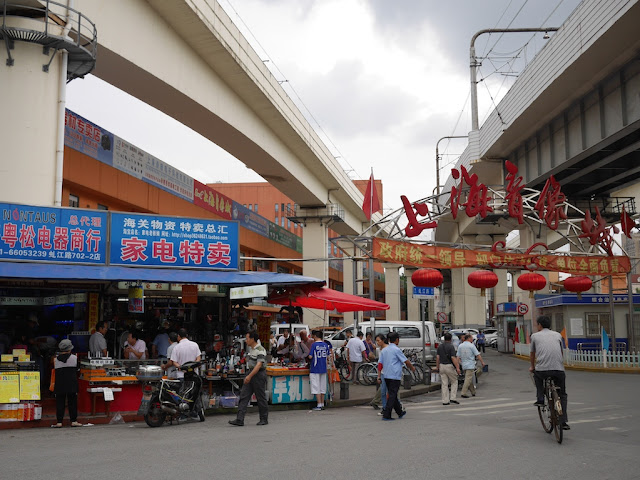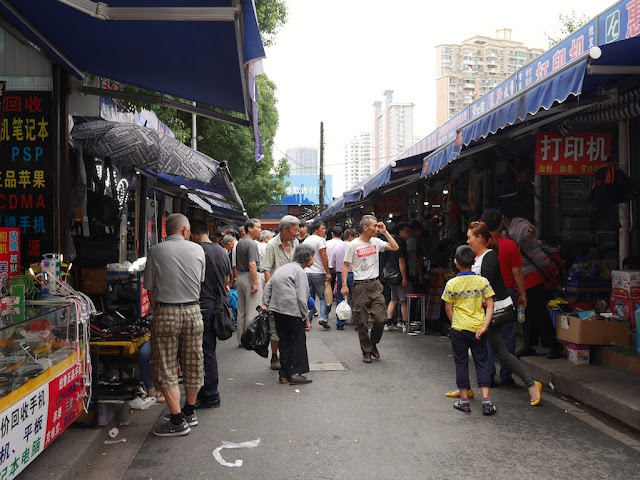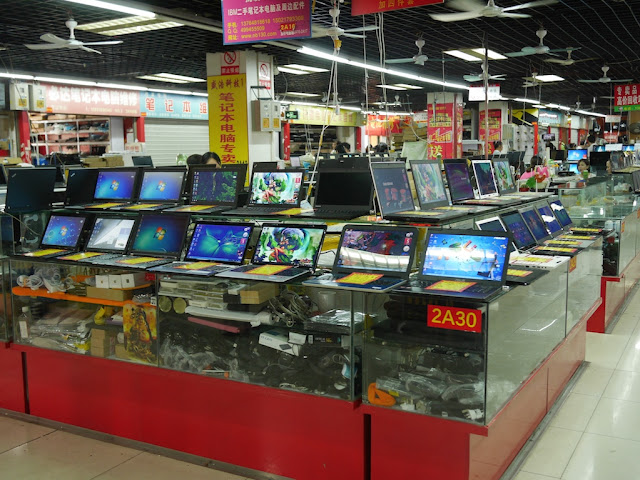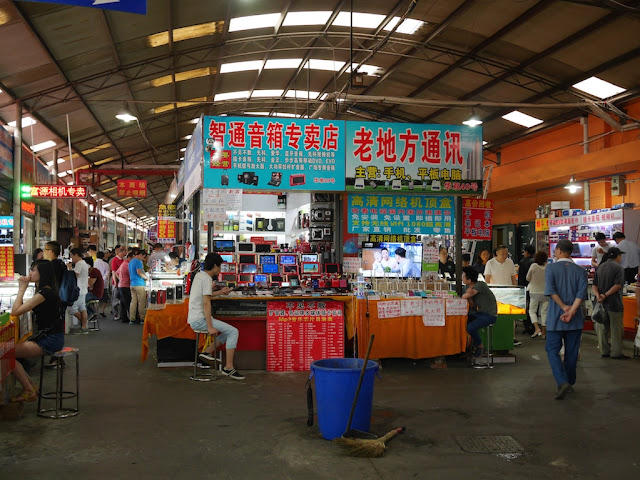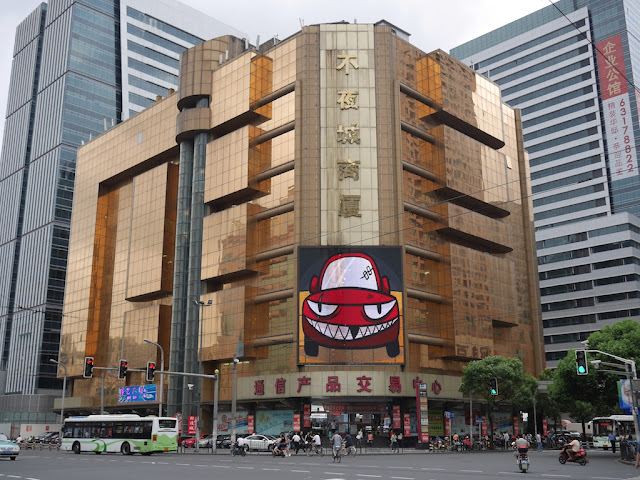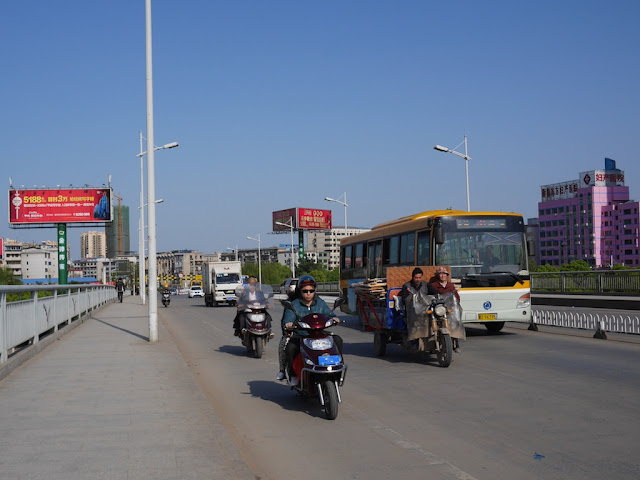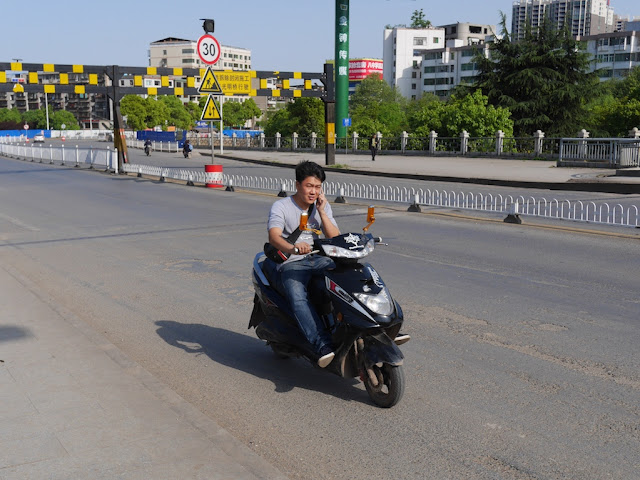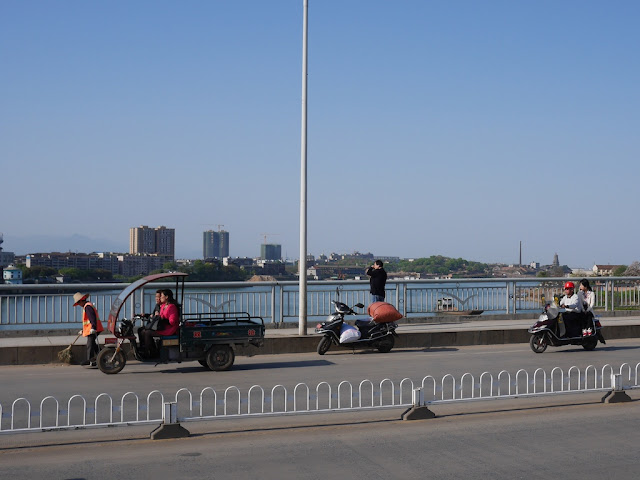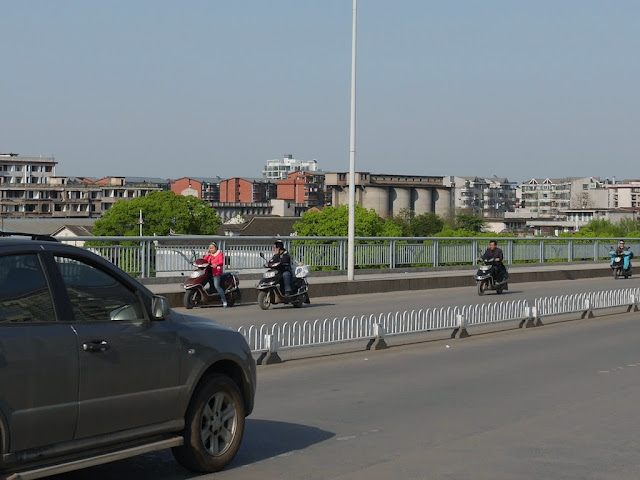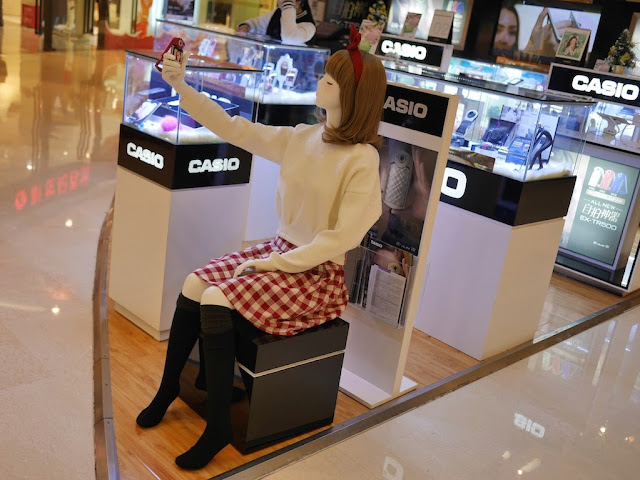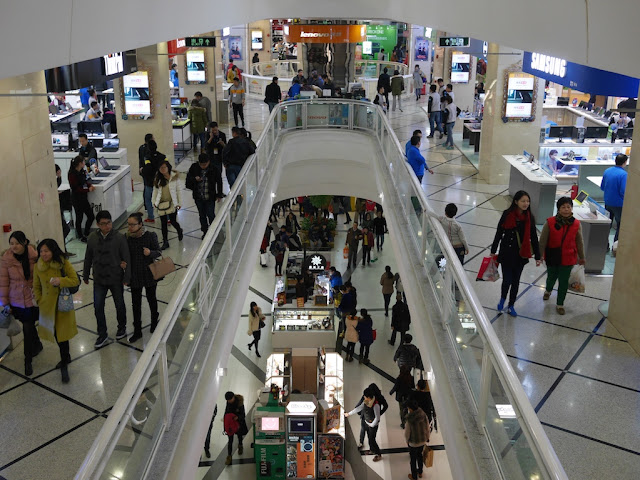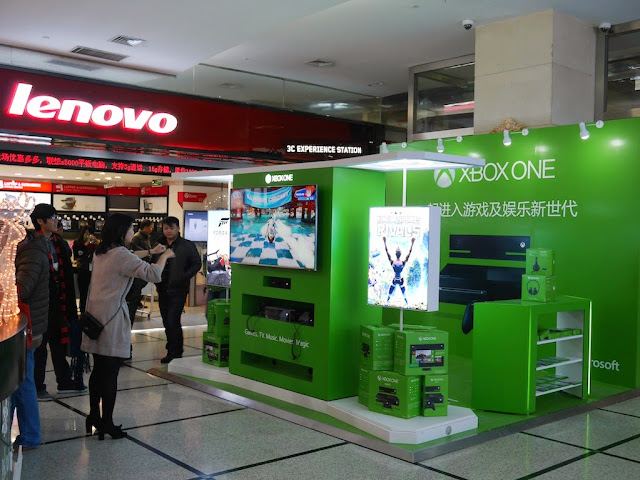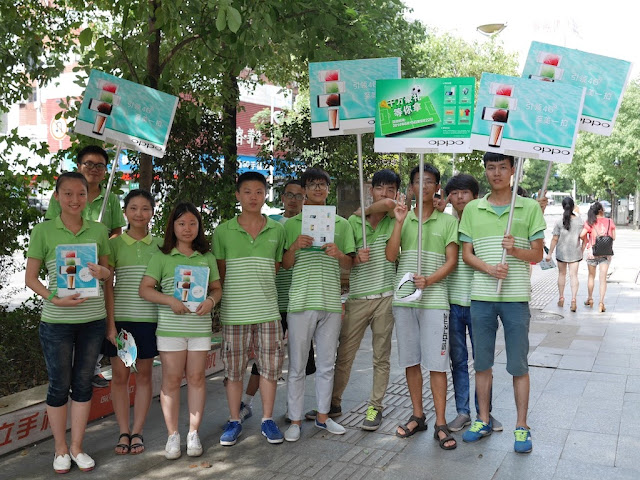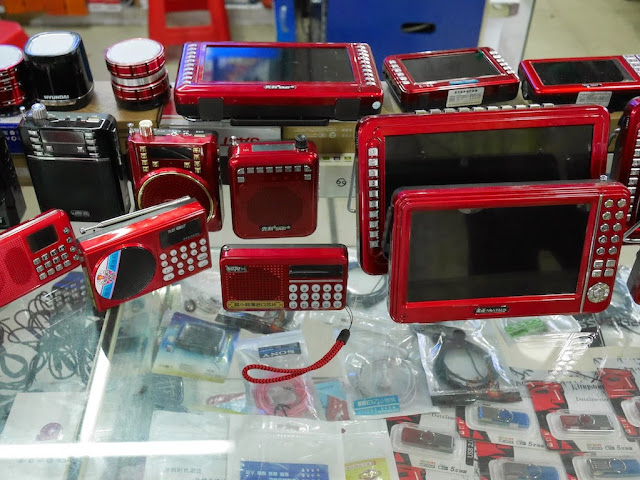Shanghai Yinxiang Cheng (上海音像城) offers a shopping experience which feels like a cross of a flea market and a large electronics store. I haven't seen any official names in English, but instead of the previous transliteration the name could be translated as Shanghai Audio & Visual City. And at least one online site refers to it as the Qiujiang Lu Electronics Market, though that doesn't reflect its prominently displayed Chinese name. Whatever the case, it is easy to find the market just east of Shanghai's Baoshan Road metro station — part of the complex sits underneath the elevated metro tracks. It may not be where to go if you want something like the latest models of popular mobile phone brands, but it offers an wide array of electronics for sale not seen in many other electronics stores in Shanghai.
Below are a few photos I took there. They only provide a quick look at the market and don't capture many of the second-hand classics available. Like the Bu Ye Cheng (Long Xiao) Communications Market near the Shanghai Railway Station, a visit can be eye-opening even if you aren't interested in buying anything.
More scenes from markets elsewhere in China later. I will also have more to say about mobile phones like those which appear below.
Below are a few photos I took there. They only provide a quick look at the market and don't capture many of the second-hand classics available. Like the Bu Ye Cheng (Long Xiao) Communications Market near the Shanghai Railway Station, a visit can be eye-opening even if you aren't interested in buying anything.
More scenes from markets elsewhere in China later. I will also have more to say about mobile phones like those which appear below.



